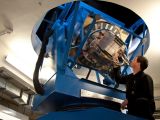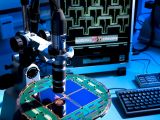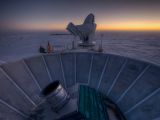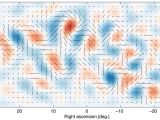The international group of astrophysicists operating the Background Imaging of Cosmic Extragalactic Polarization 2 (BICEP2) experiment at the South Pole announced on March 17 that the instrument has been able to capture the first direct evidence supporting the existence of gravitational waves. These structures have been hypothesized to exist for decades, but have never been observed directly.
The BICEP2 collaboration was led by expert John Kovac, who is based at the Harvard-Smithsonian Center for Astrophysics (CfA). The experiment was designed by Chao-Lin Kuo, a physicist at Stanford University. The team informed its search based on a theory Johns Hopkins University Professor Marc Kamionkowski proposed in 1997.
The research team includes experts from the Cardiff University, the California Institute of Technology, CfA, the Jet Propulsion Laboratory, The Minnesota Institute for Astrophysics, the University of British Columbia, the US National Institute of Standards and Technology, Stanford University, the Kavli Institute for Particle Astrophysics and Cosmology, and SLAC National Accelerator Laboratory.
Gravitational waves are ripples in the fabric of spacetime that represent a natural consequence of the theory of general relativity proposed by Albert Einstein in 1916. These structures are thought to transport energy as gravitational radiation through space, and they are hypothesized to propagate just like waves do on the ocean surface, hence their names.
Identifying gravitational waves now allows astrophysicists to confirm a number of models and theories, including some related to the Big Bang, the existence of the Cosmic Microwave Background (CMB), cosmic inflation and expansion, and so on. More importantly, this discovery highlights the deeply-set connection between general relativity and quantum mechanics.
“This is huge. It’s not every day that you wake up and find out something completely new about the early Universe. To me this is as Nobel Prize–worthy as it gets,” says Kamionkowski. He was not a part of this research, but his works were used to develop the methodology applied by the BICEP2 detector.
The instrument was able to make this groundbreaking discovery by analyzing smaller-scale structures within the CMB, which is believed to be relic radiation left behind as the Universe cooled after the Big Bang. Numerous missions have thus far been focused on studying patterns in the background.
Like all other types of light, radiation emitted by the CMB can be polarized when passing through the atmosphere. “Our team hunted for a special type of polarization called ‘B-modes,’ which represents a twisting or ‘curl’ pattern in the polarized orientations of the ancient light,” explains the co-leader of the investigation, JPL physicist Jamie Bock.
According to the BICEP2 group, traveling gravitational waves can compress the CMB in front of them, leading to swirly, distinctive patterns that the detector is apparently capable of noticing. The researchers also found that these waves display a property called handedness, which is also present in regular light.
“The swirly B-mode pattern is a unique signature of gravitational waves because of their handedness. This is the first direct image of gravitational waves across the primordial sky,” explains Chao-Lin Kuo, another co-leader of the research effort, and a physicist at both Stanford and SLAC.
Avi Loeb, a renowned theoretical physicist at Harvard University, commented that this research provides the smoking gun scientists still needed to confirm inflation, or the fact that the Universe is expanding at an ever-accelerating pace. “These results are not only a smoking gun for inflation, they also tell us when inflation took place and how powerful the process was,” he said.
Interestingly, BICEP2 found much stronger B-mode signatures in the CMB than theorists predicted. Over the past three years, astrophysicists with the research group checked and double-checked the results in order to ensure that the data they were seeing was not produced by factors other than gravitational waves, such as abnormal dust distribution patterns within our own galaxy.
The new data suggests that a grand unifying theory can be developed to explain the physical world from the cosmic to the elementary particle scales. Additionally, an important number of inflationary models that do not feature such a scale are infirmed. Physicists say that the existence of gravitational waves implies that bosons heavier than the Higgs also exist in the Universe.
Since these particles would be so heavy that no conventional particle accelerator would be able to synthesize them, the new “measurement is allowing us to use the early Universe as a lab for new physics in energy ranges that are otherwise inaccessible to us,” Kamionkowski concludes.
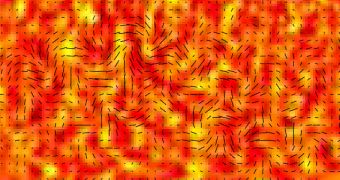
 14 DAY TRIAL //
14 DAY TRIAL // 
